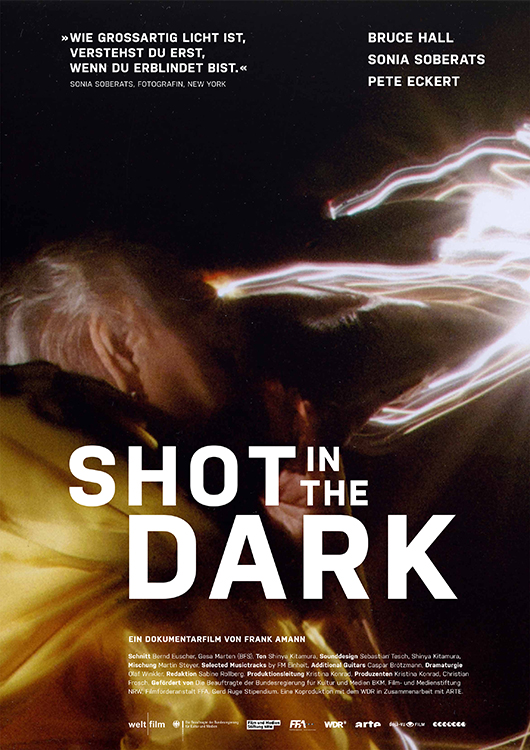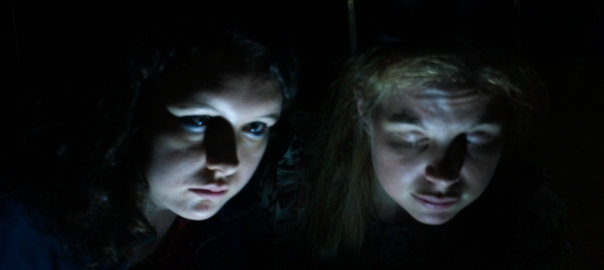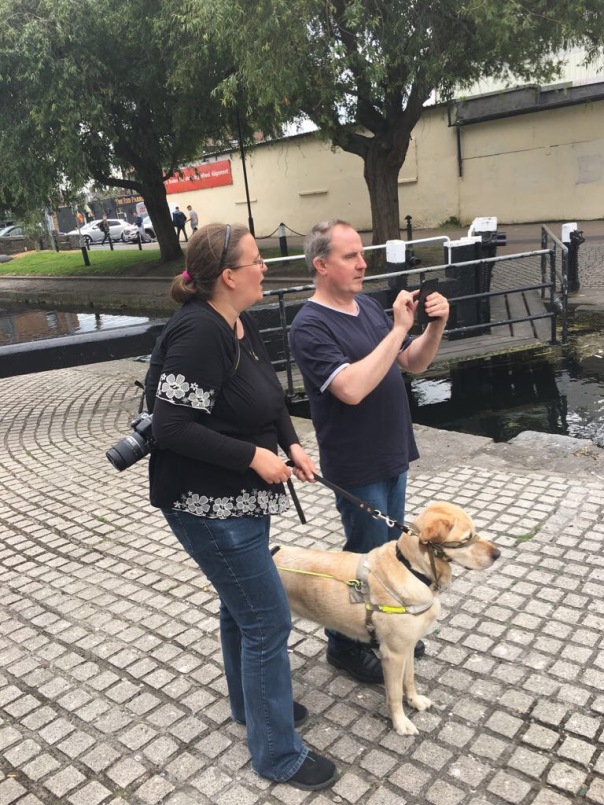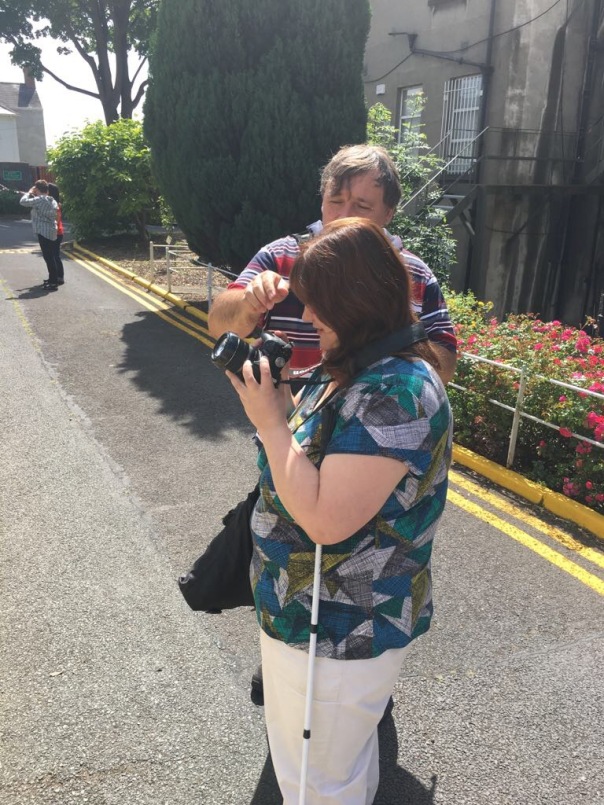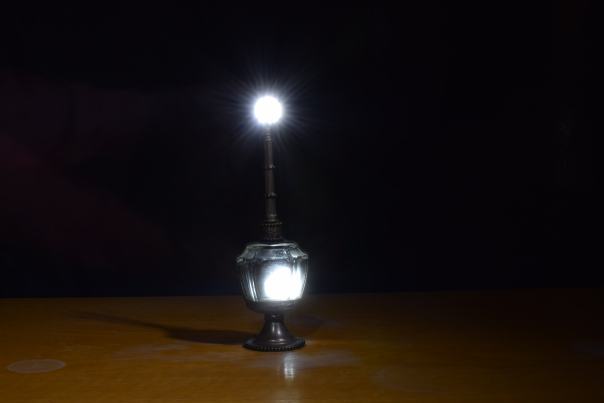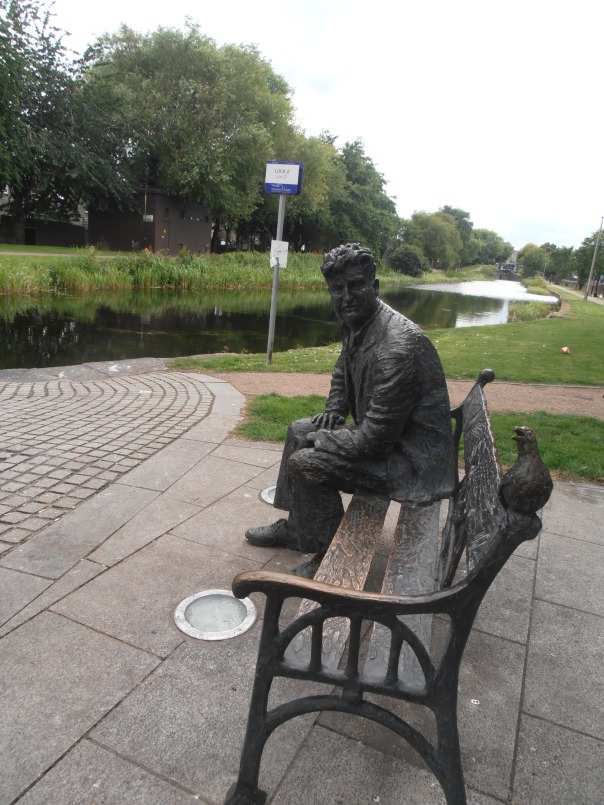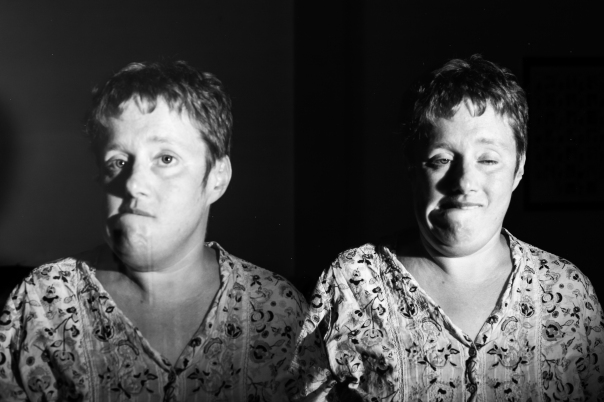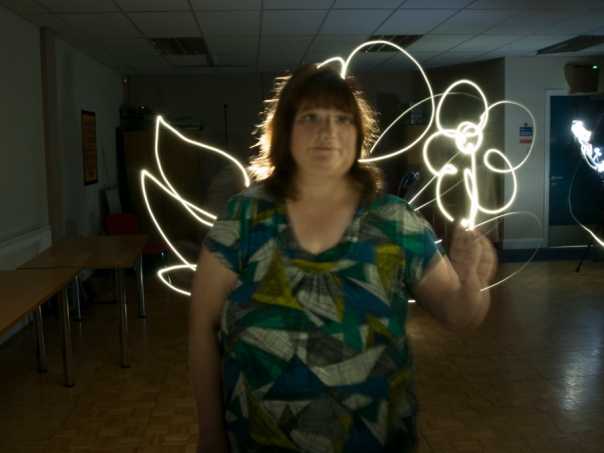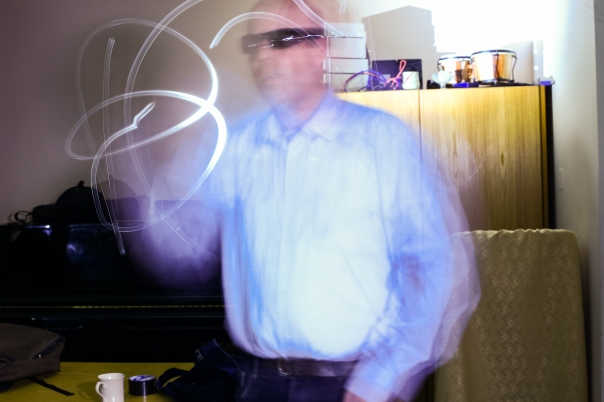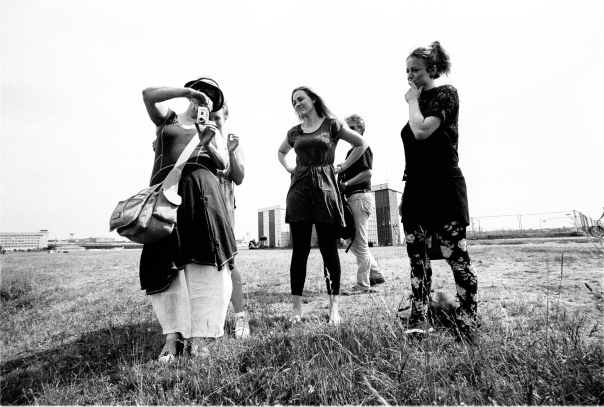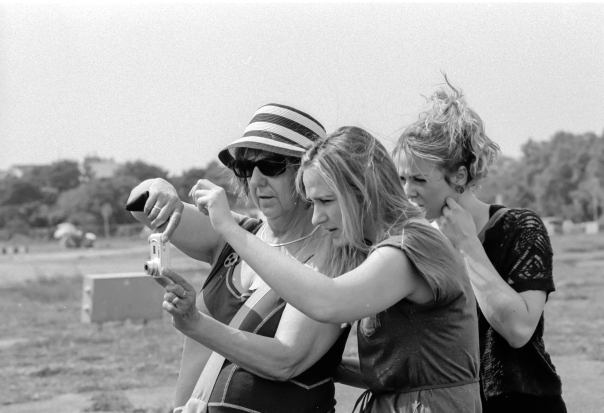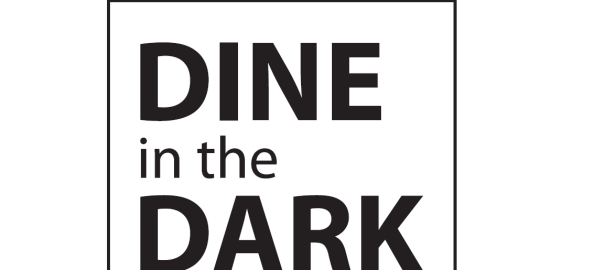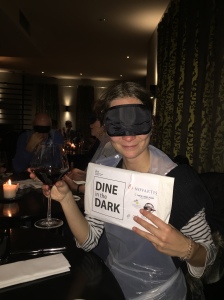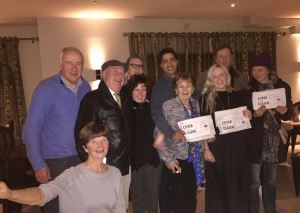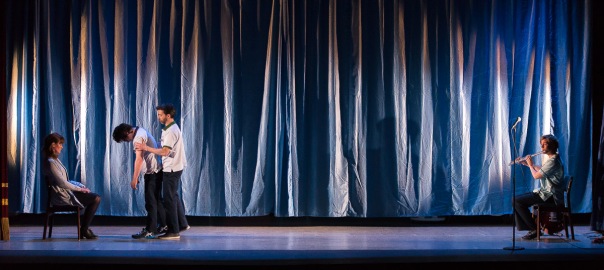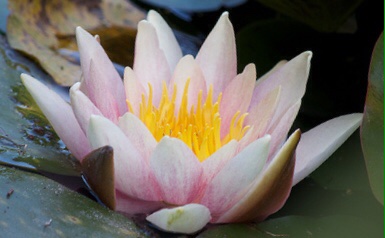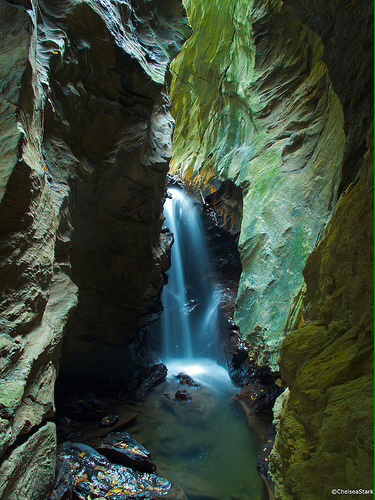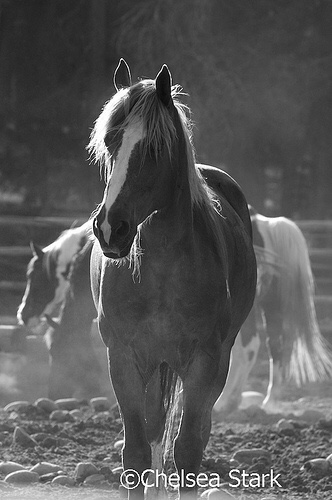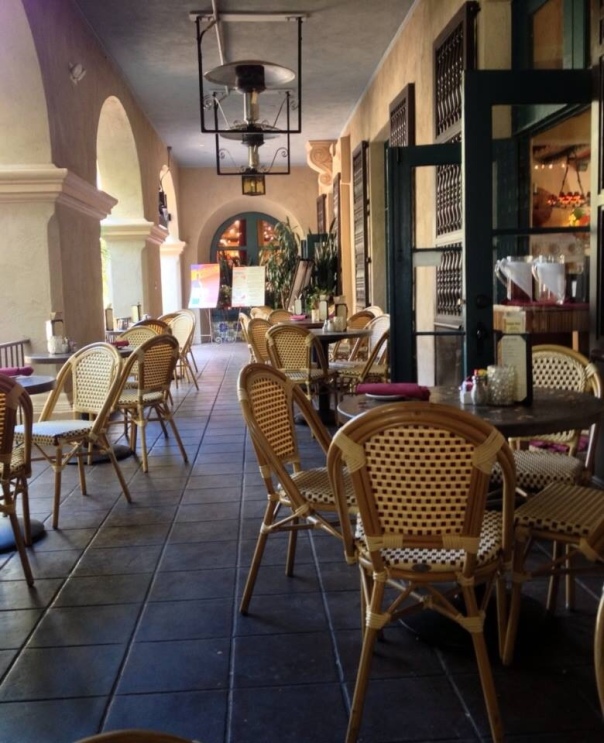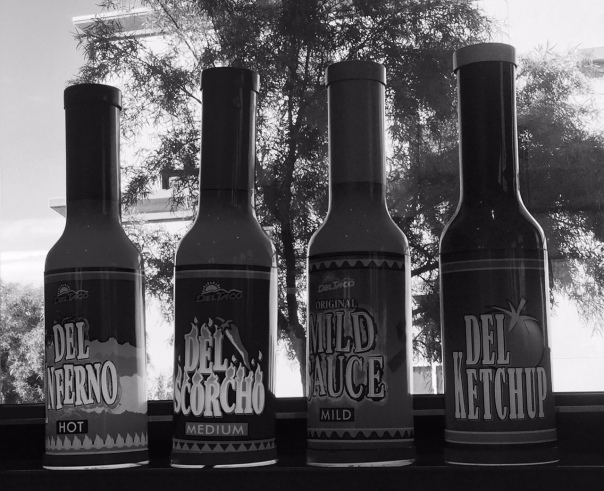Although the number of audio described and subtitled live-performances has considerably increased over the last few years, they are still rare outside Dublin. Consequently, I was delighted when I received the Arts & Disability Ireland text newsletter notifying subscribers that WillFredd Theatre Company was to bring its newest production CARE to the Galway Town Hall Theatre. The show featured audio description for visually impaired audience members and subtitles for patrons with hearing impairments.
What is Audio Description?
People may know Audio description (AD) from TV programmes. It is a voiceover telling blind and visually impaired viewers, or indeed anyone who chooses to use it, information that is not conveyed through dialogue, music or sound. For example It would say something like: “John enters holding a folder under his arm. He is a well-dressed man in his forties.” I’m not familiar with the production side of AD, but it is important that the information is as objective as possible, so that the viewers can form their own opinion. Timing too is very important, since the voiceover should not overlap with the dialogue or give clues in advance or too late.
I only learned recently, that being an audio describer is a profession in its own right, which is currently not taught in Ireland. Unlike the AD on TV or DVDs, the voiceover for plays is usually live, since breaks in dialogues can vary slightly. Producing an audio description can take up to forty hours: The describer attends rehearsals, watches video footage, writes a script and finally performs it off stage.
Audience members get a one-ear -piece headset with two wheels, one for turning it on and off and one to adjust the volume. Personally, I think this is better than giving people a smart phone or developing an app because not everyone knows how to use them and the important feature of AD is its accessibility.
Going to the theatre as a visually impaired person
Before there can be an audio description there obviously has to be a play and while for me the AD definitely increases my enjoyment of the performance, plot and acting are still my main criteria when reviewing a play. I’m a regular theatre goer and having AD is the exception. Mostly I have to rely on what there is to hear, the bit of movement I can see from being seated in the front rows or whispered comments from friends. Thus, I tend to go to traditional plays with lots of dialogue. If they were offered with AD, I would give more experimental and dance pieces another chance. While I prefer to go to shows with friends and to talk about it over a drink afterwards, I would go on my own if I really want to see something.
CARE “a show about the people who add life to days, if not days to life”
CARE explores the daily work and private life of four hospice staff members, thus questioning and redefining our associations and often prejudices about what working, living, dying and grieving in a hospice is like.
Having seen numerous Irish plays, I expected something very dramatic and very dark, featuring tragic family stories and heartbreaking last words. Although CARE definitely has its sad moments – and does not culminate in a happy ending as such –, it is a beautiful depiction of compassion and love for people and life – simply summarised as CARE. The action could be set in any hospice in Ireland or indeed worldwide.
Interestingly, the protagonists are not the patients but the staff members: nurses, physiotherapists and social workers. The audience accompanies them through their daily jobs, their tea breaks and their private lives in the latter of which they have to deal with the stigma of pure death surrounding hospices. The main patient, a woman called Anne who is in her fifties dying of lung cancer and her husband and children who have to deal with her eminent death are narrated by the staff members. Having a clothes mannequin representing the patient avoids the pathos and victimisation commonly associated with the death of an individual, but I sometimes thought the patient could have shown some signs of life and agency not only through narrations but also through his or her own speech or movement. The main focus clearly lies on the way individual staff members interpret and deal with medical history, physical complaints, mental anxieties and relatives denying the impending death of a loved one and attending the death bed. The last days in a hospice are not about dying they are about living as long and as comfortable as possible until the end. It was quite touching to see how the characters did their best to fulfil their patient’s personal last wishes to bring them some final pleasure. The play definitely changed my perception of hospices and the people who work their.
“Life is a sexually transmitted disease with a 100% mortality rate”
There is also some humour in the play, for example when a patient drinks a whole bottle of ”Baileys” through a straw, resulting in a terrible hangover in the morning, only to be cured with bacon sandwiches. To add some cynicism and serious social commentary on the “trolley crisis” in Irish hospitals, the play opens with a scene showing HSE administrators deciding how many beds are available and who gets them by rolling the dice.
I would have been able to follow the plot without audio description, but I would have missed a lot of details, especially the dance piece in the middle and the final Elvis impersonation. In theatre and film visual aspects like set, costume and gestures are important and sometimes not seeing them is missing an essential part of the performance.
The audio description was very good, a pleasant female voice in the background, discretely filling the silences between dialogues and music. There were a few background noises and I had to adjust the volume depending to what was happening on stage. Unfortunately, I missed the introduction describing set and characters who were already on stage when we entered the theatre. Overall the AD was helpful and objective as it should be.
Improving the communication between disability advocacy groups and “mainstream” institutions
As far as I could see, only a friend and I were using the audio description which surprised me, because there are quite a few blind and visually impaired people living in and around Galway city. So where were they? Perhaps, many people who would benefit from AD do not know that it even exists or are not aware which shows are audio described. While the information was widely distributed within the disabled community, it did not appear in mainstream print and online publications. Consequently, nobody in the local arts and theatre community knew about it. Often programme brochures are printed before all details concerning the AD are finalised. Nevertheless, AD should not be regarded as special feature for minority groups of little interest to the general public. Even if the majority of audience members will not use it, they may know someone who would benefit from it and spread the word.
Getting to the venue, especially from county Galway may also be an obstacle, but I have already written about the difficulties visually impaired public transport users encounter on a daily basis elsewhere.
Patrons with disabilities too are paying customers and – like all public sectors – culture and entertainment facilities should be as inclusive and accessible to everyone. Therefore it is essential that culture, media and government organisations establish effective networks with disability advocacy groups to inform the public. On the other hand, people with disabilities should try to avail themselves of AD and similar offers, because if they are not used they eventually will no longer be available.
According to their website:
WillFredd’s work engages with contemporary culture, actively inviting new audiences into the theatre. Through ethical encounters between artists and communities of place, space and interest, the company develop theatre which responds to and represents y elements of these communities.
By developing CARE together with real-life hospice staff and by providing audio description and subtitles to the performance, they certainly fulfilled their objectives. Thanks for considering my special needs as an audience member. I would also like to thank the Arts & Disability Ireland team and the staff of the Town Hall Theatre for an amazing, inclusive night out.
You can still see CARE audiodescribed and captioned in the Pavilion Theatre Dun Laoghaire on May 21st. The next accessible show in the Galway Town Hall is The Plough and The Stars on May 26nd.
CARE
Directed by Sophie Motley
Designed by Sarah Jane Shiels
Produced by Kate Ferris
Sound and Music by Jack Cawley and Sean Mac Erlaine
Choreography by Emma O’Kane
Costume Design by Sarah Bacon
Performed by Jack Cawley, Sonya Kelly, Sean Mac Erlaine, Eleanor Methven and Shane O’Reilly
Links
WillFredd Theatre Company
Arts & Disability Ireland
Photo by Marcin Lewandowski: L-R: characters Marie Ruane, John Doran, Paul Curley, Maaike van der Linde
all quotes are taken from http://willfredd.com/
Read my review of last year’s Abbey Theatre production of Marina Carr’s By the Bog of Cats
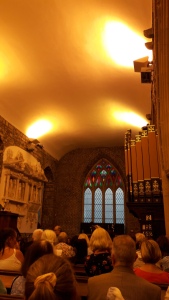 St Audoen’s Church in Dublin. Its beauty inspired me to take out my phone camera.
St Audoen’s Church in Dublin. Its beauty inspired me to take out my phone camera. 
